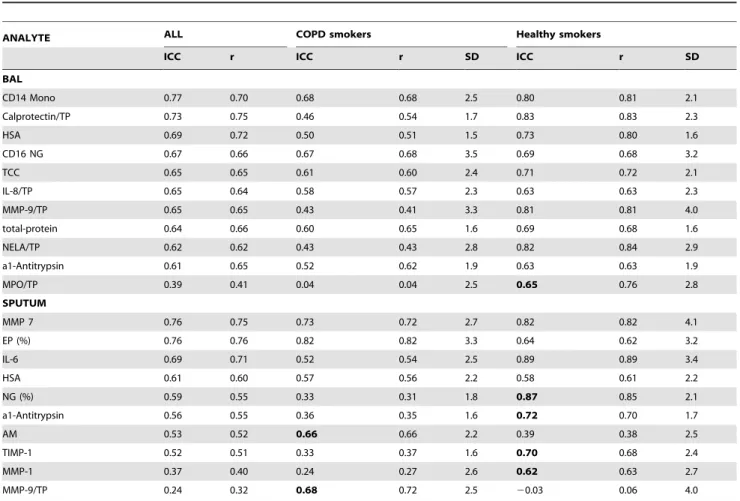Repeatability of and relationship between potential COPD biomarkers in bronchoalveolar lavage, bronchial biopsies, serum, and induced sputum.
Texto
Imagem



Documentos relacionados
In a cross- sectional study on patients with stable COPD, induced sputum and blood samples were collected for the determination of C- reactive protein, eosinophilic cationic
Induced Sputum versus Bronchoalveolar Lavage in the Diagnosis of Pneumocystis jiroveci Pneumonia in Human Immunodeficiency Virus-Positive Patients.. Rosemeri Maurici da Silva 1
Patients with Crohn’s disease and a positive methacholine challenge test had an even higher percentage of lymphocytes in induced sputum compared with other Crohn’s dis- ease
VEGF in bronchial biopsies from patients with inoperable NSCLC and SCLC and examined the correlation between these markers, the different cancer types, clinicopathologic
The objectives of the present study was to evaluate the changes in blood and bronchoalveolar lavage (BAL) levels of cytokines in patients undergoing myocardial revasculariza-
Objectives: To evaluate the sensitivity of the specimens collected by means of fiber bronchoscopy (bronchoalveolar lavage and transbronchial biopsy) for the diagnosis of
The objective of this study was to analyze the cellular profile of IS and peripheral blood of patients with COPD, smokers without bronchial obstruction, and nonsmoking
examination of induced sputum samples as a param- eter of inflammation to be used in clinical practice and describes conditions under which the induced sputum technique should be